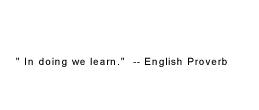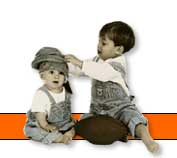


>> home

How
Children Think and How They Learn*
1.
Children learn when their physical needs are met and they feel safe and
secure.
2. Children
construct their own knowledge; they develop their own understanding of
the world around them. Making mistakes is a part of the learning process.
3. Children have different ways of
thinking at each stage of development and their thinking changes over
time.
4.
Content should have meaning for children; this motivates children to learn.
5. Children learn through social interactions
with adults and other children; social development cannot be separated
from cognitive development.
6. Children learn through play:
functional play, constructive play, games with rules, and social dramatic
play.
7. Learning takes place in cycle and
includes four stages : (See Reaching Potentials: Appropriate Curriculum
and Assessment for Young Children, NAEYC, 1992)
• Awareness (to learn anything new,
children have to be aware of its existence)
• Exploration (to know and understand
something, children have to explore it through direct experience and make
it personally and meaningful)
• Inquiry (children compare their own
ideas to what is expected by society)
• Utilization (children are able to
use what they have learned and apply it to new situations)
*
From The Creative Curriculum for Early Childhood, 3rd Edition
© Teaching Strategies, Inc.,
Permission to reprint must be submitted in writing to:
Teaching Strategies, Inc., P.O Box 42243, Washington DC, 20015